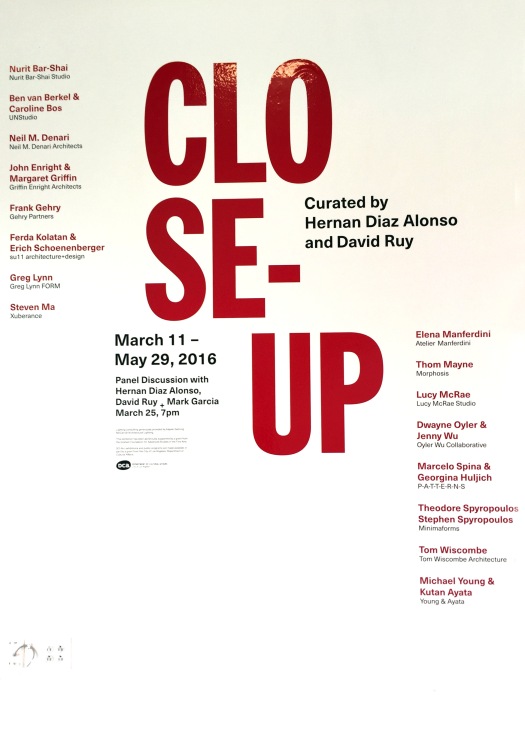I recently moved to San Francisco and now that I’m unemployed I have nothing much to do but walk around the city and try to get familiar with each neighborhood. Yesterday I was wandering the Dogpatch and found myself at the Museum of Craft and Design. There were two exhibits: Lines that Tie and Constructed Communication.
Lines that Tie displayed the work of Carole Beadle and Lia Cook and their students’ work. To be honest I didn’t know that Fiber Art was even a thing, let alone an entire movement. At first I was skeptical and I just pictured an old lady knitting some weird useless objects and calling it sculpture- but upon further observation I realized: fiber art is pretty cool. Similar to tectonics in architecture, it’s a form of constructing and manipulating a material to get an idea across. The act of linking fibers together creates an interconnected system which in the end results in a pattern- a pattern which relays an idea or message. This idea of interconnectivity is something I’m obsessed with ever since reading Marshall Macluhan’s writing. The aggregation of fibers also acts the same way as a pixel (#relevant). Another thing I love- when something analog functions the same way something would digitally. I assume the fabrics had to be thought up or mapped out digitally before hitting the loom. This mapping out and going between digital and analog created a fascinating cross over, from physical to metaphysical. In a similar way this is how architecture works: starting with a sketch or concept model then going to the computer, and refining the physical model accordingly…
I like this piece because it kind of reminds me of glitch art. The patterning and weaving is extremely calculated to create this effect. Not sure if it’s meant to look like a computer glitch because it was made in 1993. Did they even have computers back then??? (If they did, they Definitely had some glitches).




Lia Cook, “Data Dots Emotional Intensity” & “Su Series”
These weaving also clearly required a ton of detail and planing. I’m wondering how much of this was planned out digitally and if so, how. I like that the different iterations of the Su Series require different techniques…it honestly boggles my mind to picture someone sitting there stitching everything.




LJ Roberts, “We Couldn’t Get In, We Couldn’t Get Out”
I love that something so macabre was knit entirely with neon pink yarn. I also like how the yarn wasn’t cut so there’s bits of it hanging off…it reminds me of Spanish moss or dripping paint. The fun part about this was the fact that the artist used a child’s toy to produce the knitting in a faster manner-so primitive yet intelligent.


Margo Walowiac, “Blue Yellow Blue”
I’m pretty sure this piece is a deconstructed tapestry of some Hindu or Buddhist imagery. Just a guess.
____________________________
For me, the highlight of Constructed Communication is definitely the work of Ben Venom. Maybe that’s because I love when artists and architects use recycled materials – maybe because there’s something gritty and DIY about the whole series. I see allusions to subcultures and new age spirituality. What’s not cool about that?? Throw in some crystals while you’re at it!
























